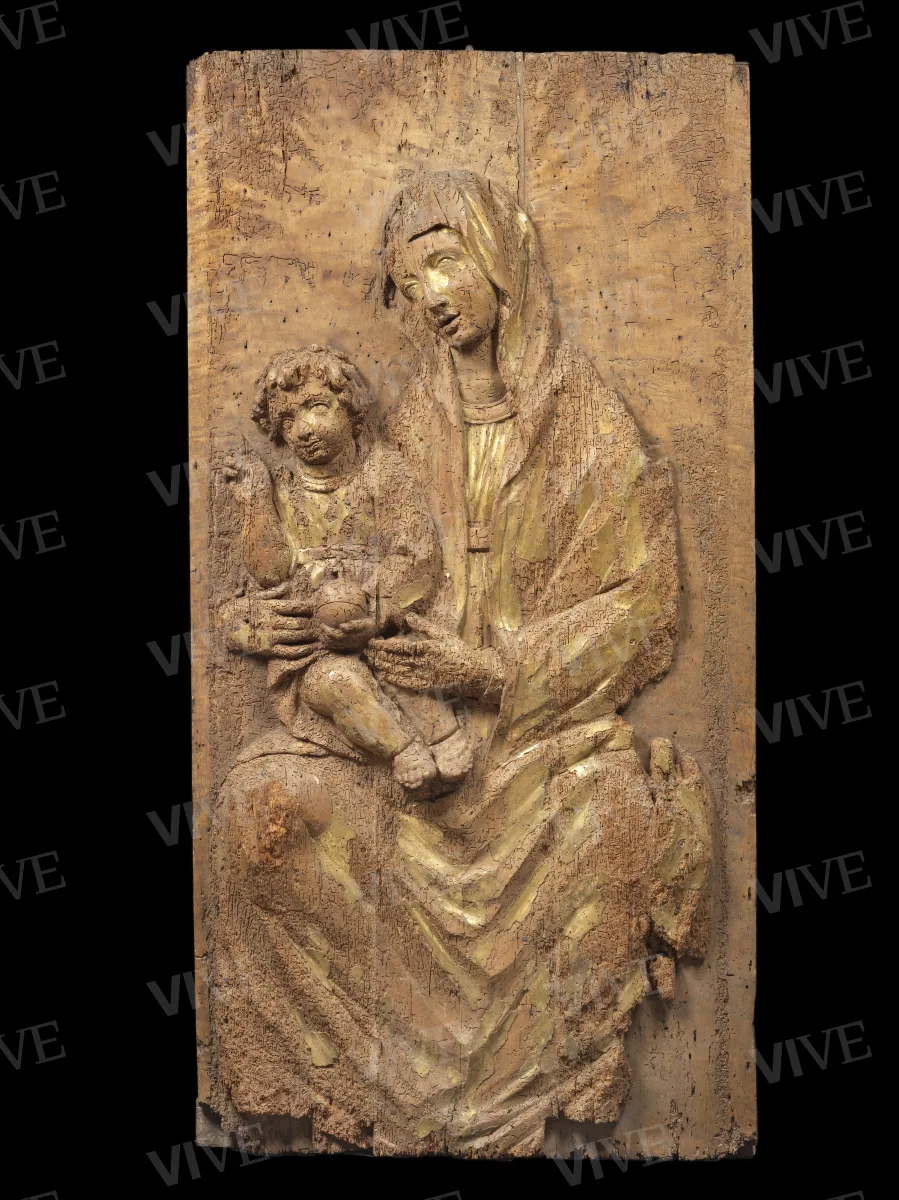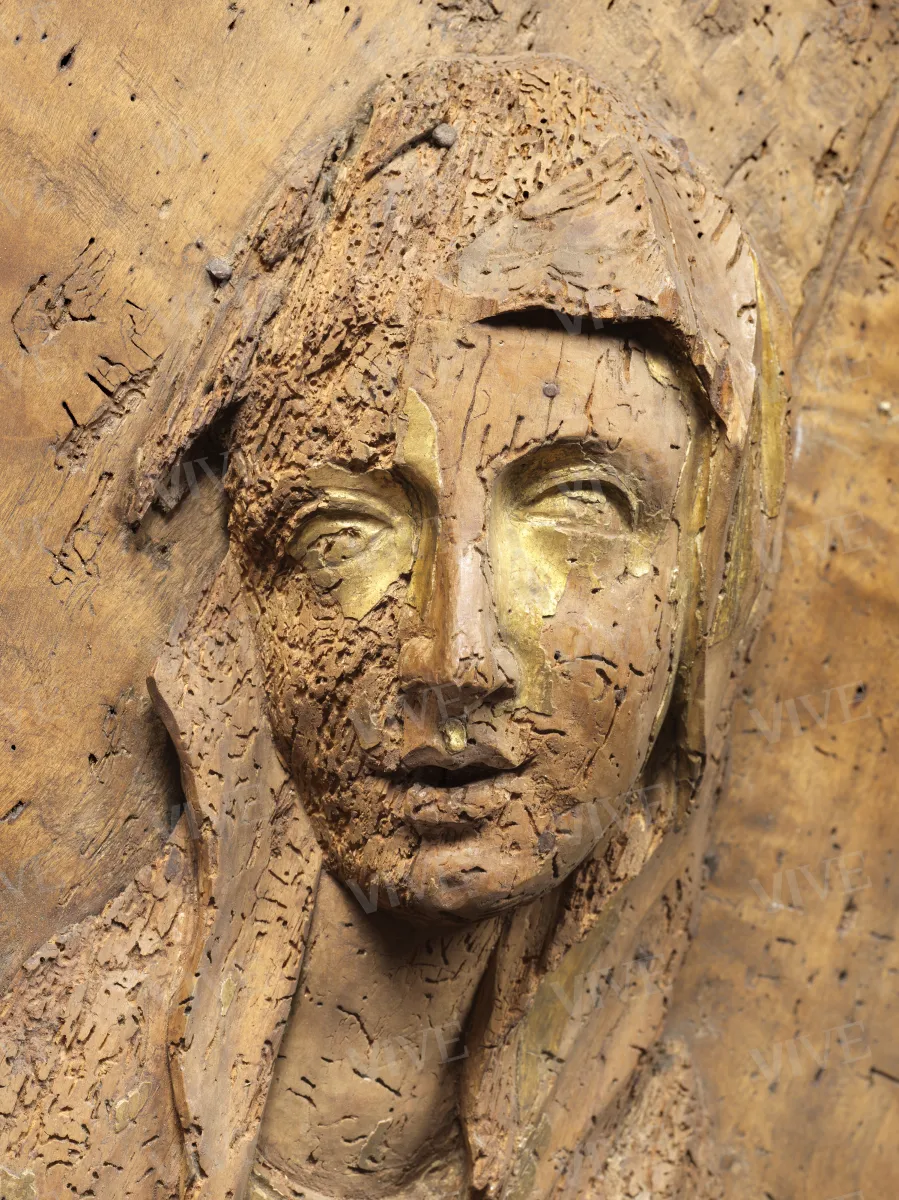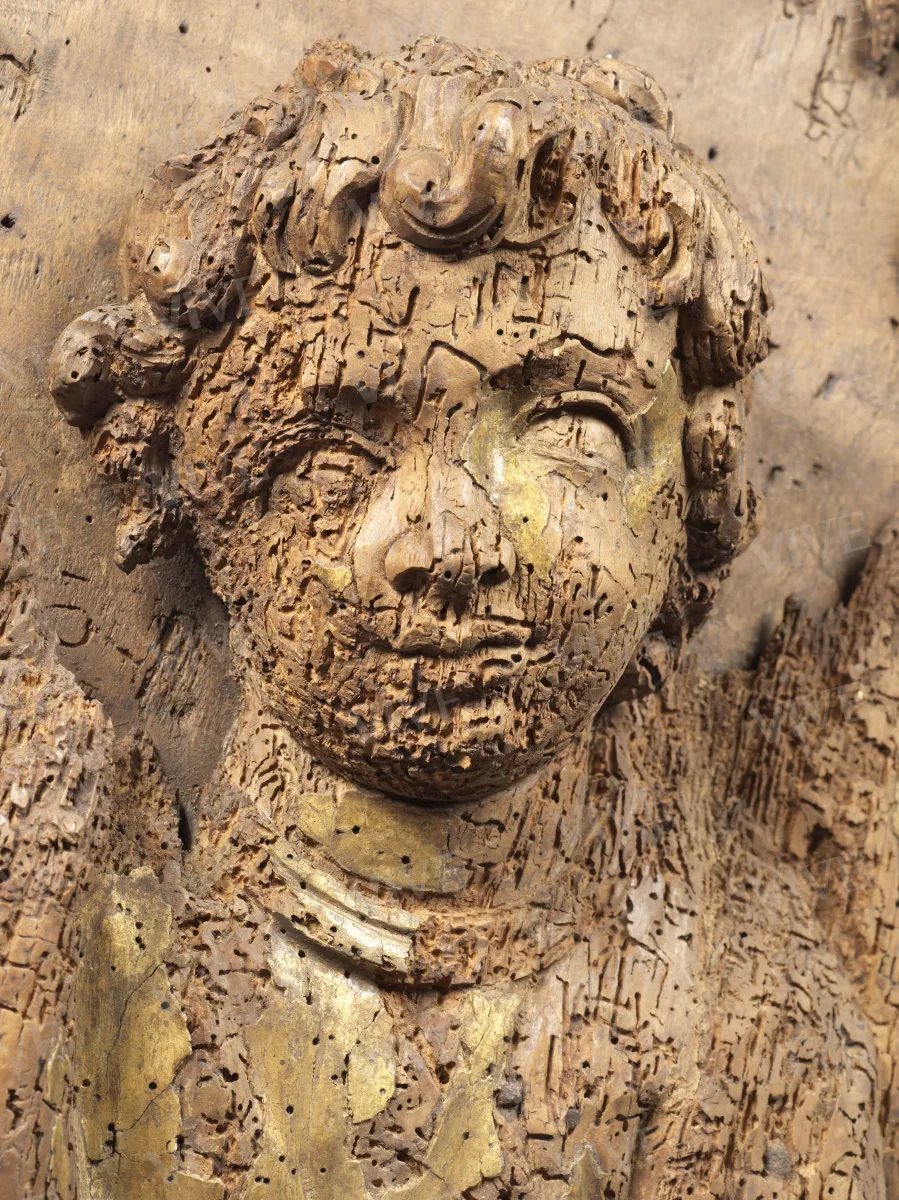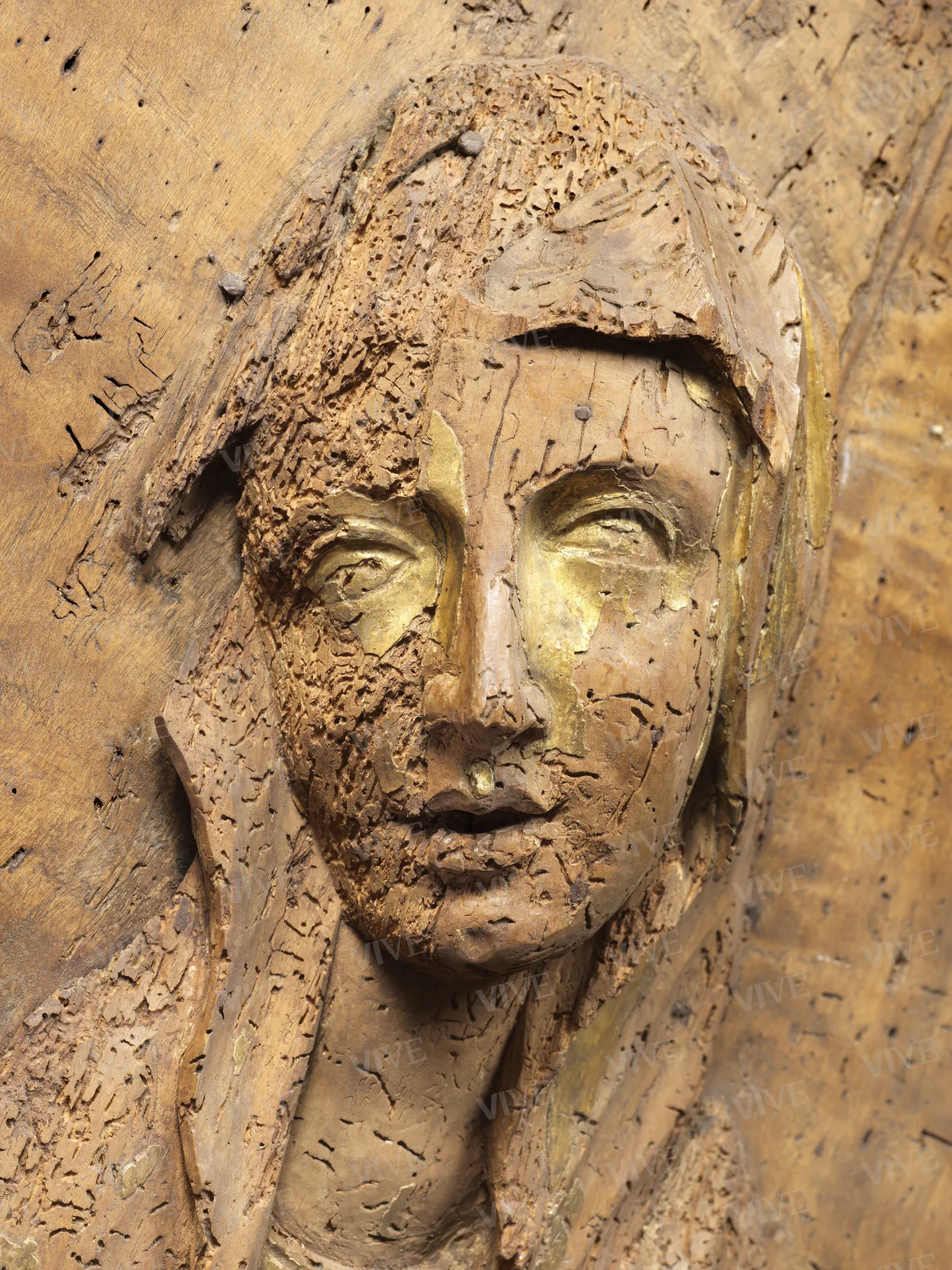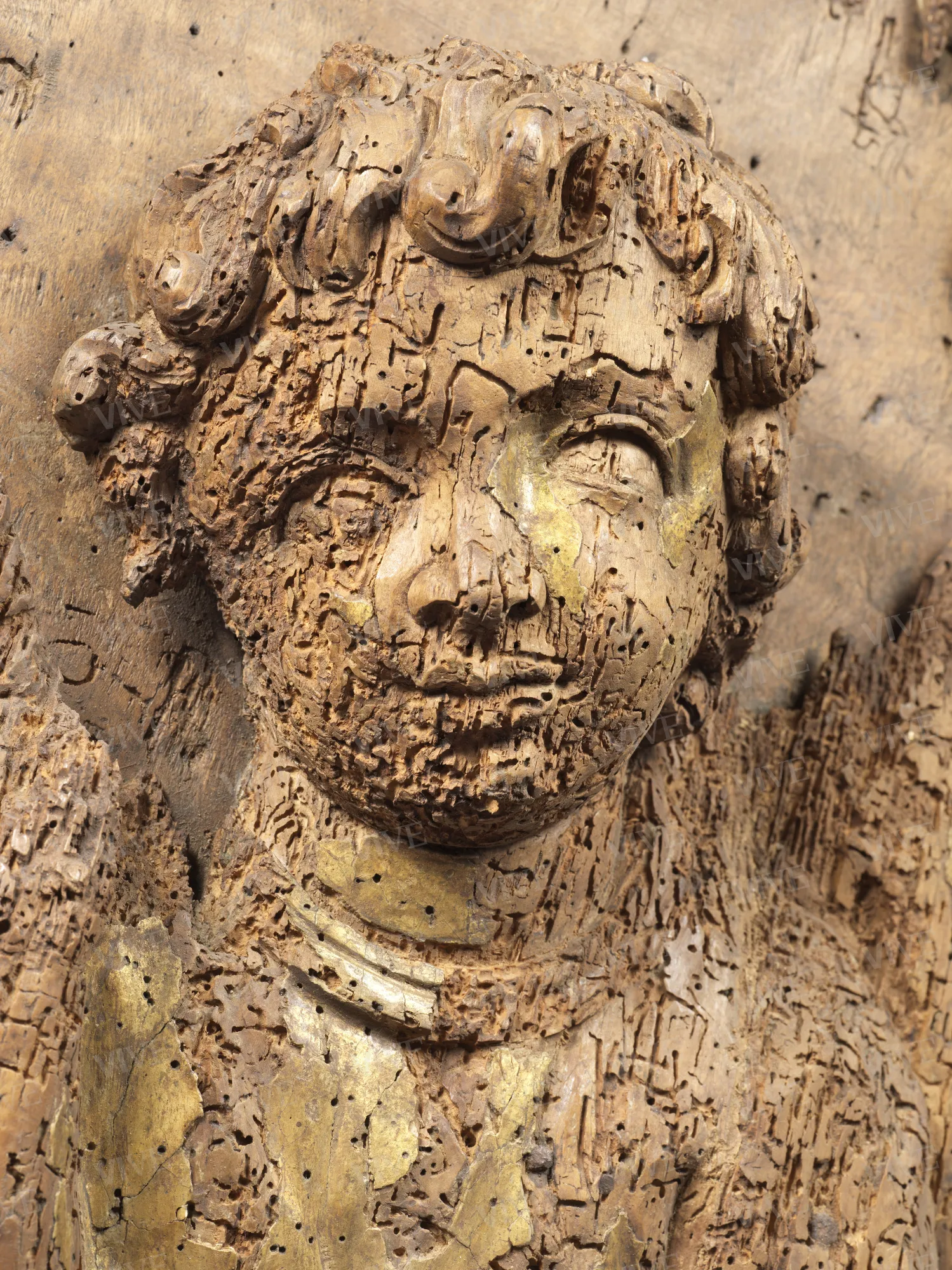Enthroned Madonna and Child
Veneto milieu 1500–1530
The sculptural group of the Virgin and Child, originally painted and gilded, is attributed to a sixteenth-century northern Italian sculptor. It may have originated as a freestanding icon, housed within an architectural tabernacle on the front of an altar, or simply in a frame designed to facilitate carrying during processions.
The sculptural group of the Virgin and Child, originally painted and gilded, is attributed to a sixteenth-century northern Italian sculptor. It may have originated as a freestanding icon, housed within an architectural tabernacle on the front of an altar, or simply in a frame designed to facilitate carrying during processions.
Details of work
Catalog entry
The artwork in question was acquired in 1935 by the Committee for the Restoration of Palazzo Venezia from an unidentified individual named Signor Pisano. This is corroborated by a plaque on the reverse side of the piece, which bears the inscription, “Property of Signor P. Pisano/ Jan. 24, 1935 – XIII” and an old inventory number, “169/74 Rome Museum Palazzo Venezia.”
The high relief sculpture portrays the Virgin seated majestically on a throne, enveloped in an elegant and ample cloak that modestly covers her form. She holds the Baby Jesus, depicted with a robust and solid figure, dressed in a tunic and adorned with thick curly hair. The infant Jesus is shown in a blessing gesture, with his left hand grasping a cruciferous globe, symbolizing Christ’s sovereignty over the world and earthly authorities.
There is no available information regarding the original provenance and destination of the Virgin and Child, nor about the tumultuous history of its collection. The current documented evidence, indicated by the fragile state of the work's structure and color, suggests damage caused by wood-eating insects and continuous exposure to atmospheric conditions. It is plausible that the artwork was initially intended as the central element of an altarpiece, a triptych, or a polyptych, accompanied by other panels and figures of saints. Alternatively, it may have been designed as a stand-alone icon displayed on an altar within an architectural tabernacle or simply in a frame, which would have facilitated its transportation during processions. Given its devotional significance, it is plausible that the icon was placed outdoors in a symbolic location for public viewing. This practice was observed with two similar polychrome wooden Marian icons: the Mother of the Children from the ancient parish church of San Giovanni Battista in Cigoli (Pisa), carved in the first half of the fourteenth century by an anonymous artist, which gained veneration following a miraculous event in 1451; and the Madonna dei Vetturini, created around 1370 by Nino Pisano for the church of Santa Maria della Spina (now housed in Pisa's Museo Nazionale di San Matteo), which was relocated during the sixteenth century to the entrance archway of the Borgo alle sette colonne to encourage devotion.
A similar story may also have affected the work in question, with consequent conservation and restoration work, such as the addition of the two golden rays that still formed the background to the figures of the Child and the Virgin in the 1970s, but were later removed because they were not relevant to the original context, and the addition of widespread gilding to replace an older naturalistic polychromy. Antonino Santangelo (1954) proposed recognizing the work as a direct replica of the monumental terracotta Madonna and Child, which remains preserved on the façade of the Palazzo degli Anziani in Bologna (Palazzo d’Accursio). This piece is signed by Niccolò dell’Arca and dated 1478.
Nevertheless, this assertion is not corroborated by the stylistic elements of Bolognese statuary from the latter half of the fifteenth century, which are characterized by a pronounced naturalism and high degree of plasticity. As noted by Grazia Maria Fachechi (2011), the Virgin with Child at Palazzo Venezia appears to adhere to a Marian iconographic typology of Byzantine origin. This typology was extensively disseminated across the Adriatic coast from Triveneto to Abruzzo and Puglia between the fifteenth and sixteenth centuries, exhibiting considerable variation in its formal adaptations. The stylistic attributes indicate its reliance on Venetian painting models from the late fifteenth and early sixteenth centuries, particularly the numerous depictions of the Madonna by Giovanni Bellini and Bartolomeo Montagna, evidenced by the ample, laminar, and stony drapery, especially visible in the broad fold of the cloak surrounding Mary’s head.
The anatomical type of the figures—powerful, flattened and schematic—combined with the pointed and geometric drapery, the repetitive curled locks of hair of the baby Jesus, as well as the immobilized posture, indicate the work of an artist from the late sixteenth century working in the Alpine region. This artist reproduces fifteenth-century models, such as those produced by the Venetian workshop of the Moranzon family and the Veronese workshop of Antonio Giolfino, in a more cursive and popular style.
David Lucidi
Entry published on 12 June 2025
State of conservation
Poor.
References
Santangelo Antonino (a cura di), Museo di Palazzo Venezia. Catalogo delle sculture, Roma 1954, p. 65;
Fachechi Grazia Maria, Museo Nazionale del Palazzo di Venezia, vol. II, Sculture in legno, Roma 2011, pp. 143-145, n. 90.

